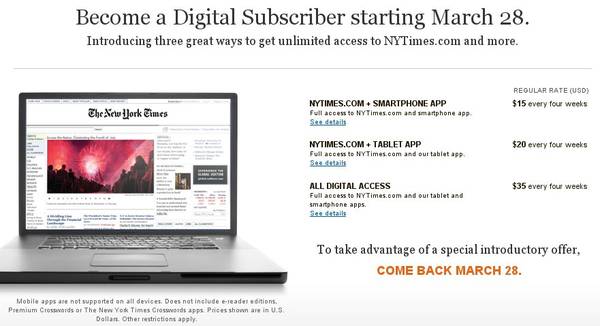Part-paywalls have gone up at the UK’s biggest-selling regional daily, the Wolverhampton-based Express and Star, and at sister title, the Shropshire Star. Breaking news will remain free but other content, such as football reports, are now behind the wall.
But will Wolverhampton and Shropshire pay?
At £2.19 more a month than the Times, is £12.18 too high a price for a monthly digital-only subscription?
Last week the Times, which went behind a paywall last summer, announced that it has 79,000 digital subscribers and the Financial Times, which has been behind a metered pay model for 10 years as of yesterday, also claims success with 210,000 subscribers.
But the Times and FT have their own reasons for tens of thousands of digital subscribers. The Times had a huge push to create high-value content as it went behind the wall and the Financial Times is perhaps best seen as a specialist publication with a wealthy readership prepared to pay for financial news.
Paywalls put up by UK regional newspapers have been less successful. Johnston Press trialled a paywall in 2009, testing it on some of the group’s smaller websites, the Southern Reporter in Scotland, the Northumberland Gazette and the Whitby Gazette, charging just 40 pence a week for access. The wall was dismantled after three months as it was deemed not viable.
There is a difference in the Express and Star’s approach and Johnston Press’ tactics though, in that the Wolverhampton and Shropshire titles are trying to push their print subscriptions, adding digital as an optional extra and are charging just 40 pence a week more for the print, online and smartphone deal than digital-only.
The exact cost may not be the deciding factor in whether readers decide to get their credit cards out. The Johnston Press paywall was very cheap – just £1.71 a month – but few paid. The New York Times, which went behind a metered-paywall last week, believes readers will pay up to $35 a month, which is the cost for a combined online, iPad and smartphone subscription (though readers were eased in with a £0.99 a month charge).
The Express and Star has taken the bold step of becoming the first major regional newspaper in the UK to go behind the wall. If it invests in high value content, makes payment easy, has an engaged audience already and can convince advertisers a quality rather than a quantity of online readers is more important, then the wall might work. If not, then the wall may come tumbling down.
